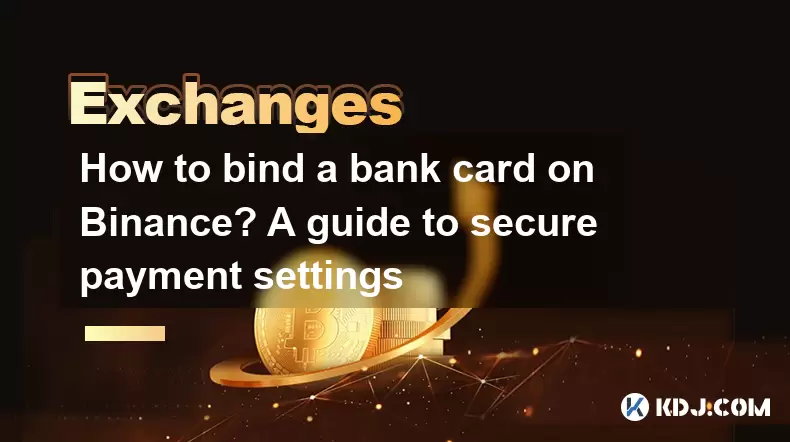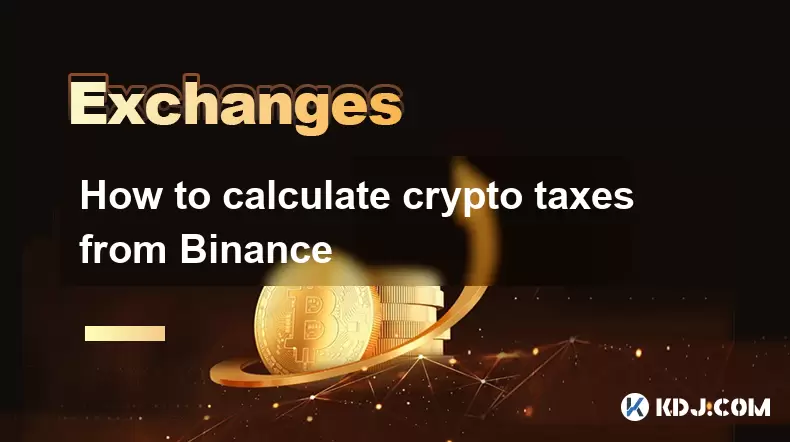-
 Bitcoin
Bitcoin $117500
2.15% -
 Ethereum
Ethereum $3911
6.19% -
 XRP
XRP $3.316
10.79% -
 Tether USDt
Tether USDt $1.000
0.01% -
 BNB
BNB $787.2
2.24% -
 Solana
Solana $175.2
4.15% -
 USDC
USDC $0.9999
0.00% -
 Dogecoin
Dogecoin $0.2225
8.40% -
 TRON
TRON $0.3383
0.28% -
 Cardano
Cardano $0.7868
6.02% -
 Stellar
Stellar $0.4382
9.34% -
 Hyperliquid
Hyperliquid $40.92
7.56% -
 Sui
Sui $3.764
7.63% -
 Chainlink
Chainlink $18.48
10.66% -
 Bitcoin Cash
Bitcoin Cash $582.1
1.88% -
 Hedera
Hedera $0.2601
6.30% -
 Avalanche
Avalanche $23.33
4.94% -
 Ethena USDe
Ethena USDe $1.001
0.02% -
 Litecoin
Litecoin $122.3
2.04% -
 UNUS SED LEO
UNUS SED LEO $8.969
-0.27% -
 Toncoin
Toncoin $3.339
0.86% -
 Shiba Inu
Shiba Inu $0.00001287
4.30% -
 Uniswap
Uniswap $10.43
7.38% -
 Polkadot
Polkadot $3.861
5.08% -
 Dai
Dai $1.000
0.02% -
 Bitget Token
Bitget Token $4.513
3.41% -
 Monero
Monero $267.7
-6.18% -
 Cronos
Cronos $0.1499
4.14% -
 Pepe
Pepe $0.00001110
5.15% -
 Aave
Aave $284.9
8.28%
How to bind a bank card on Binance? A guide to secure payment settings
To bind a bank card to Binance, ensure your account is verified, enter your card details accurately, and complete the verification process for seamless crypto transactions.
May 19, 2025 at 12:28 am

Binding a bank card to your Binance account is an essential step for those looking to engage in cryptocurrency transactions seamlessly. This process not only allows you to deposit and withdraw funds but also ensures that you can trade with ease. In this guide, we will walk you through the steps required to bind a bank card on Binance, ensuring that your payment settings are secure and efficient.
Preparing to Bind Your Bank Card
Before you start the process of binding your bank card to Binance, it's important to ensure that you have completed the necessary prerequisites. First, you need to have a verified Binance account. This means you must have completed the KYC (Know Your Customer) process, which involves submitting your personal identification documents for verification. Additionally, ensure that you have your bank card details ready, as you will need to input them accurately during the binding process.
Accessing the Fiat and Spot Trading Section
To begin binding your bank card, log into your Binance account. Once logged in, navigate to the Fiat and Spot Trading section. This can be found on the top navigation bar of the Binance website or app. Click on this option to proceed to the next step.
Selecting Buy Crypto with Bank Card
Within the Fiat and Spot Trading section, you will see various options for buying cryptocurrencies. Look for and select the Buy Crypto with Bank Card option. This will direct you to a page where you can choose the specific cryptocurrency you wish to purchase and the fiat currency you want to use for the transaction.
Entering Your Bank Card Details
After selecting the Buy Crypto with Bank Card option, you will be prompted to enter your bank card details. Here, you need to input the following information:
- Card Number: Enter the 16-digit number on the front of your card.
- Expiration Date: Input the month and year your card expires.
- CVV Code: Enter the 3-digit security code found on the back of your card.
- Cardholder Name: Type in the name as it appears on your card.
Ensure that all the details are entered correctly to avoid any issues with the binding process.
Verifying Your Bank Card
Once you have entered your bank card details, Binance will initiate a verification process to ensure the card's validity. This usually involves a small transaction being made to your card, typically ranging from $0.01 to $1.00. You will need to check your bank statement for this transaction and enter the exact amount into the verification field on Binance.
- Check your bank statement for the transaction amount.
- Enter the exact amount into the verification field on Binance.
- Submit the verification.
After successful verification, your bank card will be successfully bound to your Binance account.
Ensuring Secure Payment Settings
With your bank card now bound to your Binance account, it's crucial to ensure that your payment settings are secure. Here are some steps you can take to enhance the security of your account:
- Enable Two-Factor Authentication (2FA): This adds an additional layer of security by requiring a code from your mobile device to log in.
- Use Strong Passwords: Ensure your Binance account password is strong and unique.
- Monitor Your Account Activity: Regularly check your account for any unauthorized transactions.
- Set Transaction Limits: You can set daily or monthly transaction limits to control the amount of money that can be moved in and out of your account.
By following these steps, you can help protect your funds and ensure that your payment settings on Binance remain secure.
Frequently Asked Questions
Q: Can I bind multiple bank cards to my Binance account?
A: Yes, you can bind multiple bank cards to your Binance account. This can be useful if you want to use different cards for different transactions or if you need to switch between cards for various reasons. To add another card, simply follow the same process outlined above for binding a bank card.
Q: What should I do if my bank card verification fails?
A: If your bank card verification fails, first double-check that you have entered all the card details correctly. If the details are correct, contact your bank to ensure that the transaction from Binance has not been blocked or flagged. You may also need to try the verification process again after resolving any issues with your bank.
Q: Is it safe to bind my bank card to Binance?
A: Binance takes several measures to ensure the security of your financial information. By enabling 2FA, using strong passwords, and monitoring your account activity, you can significantly reduce the risk of unauthorized access. However, always be cautious and never share your personal or financial information with anyone.
Q: Can I unbind my bank card from Binance if needed?
A: Yes, you can unbind your bank card from Binance at any time. To do this, go to the Fiat and Spot Trading section, select the bank card you wish to unbind, and choose the option to remove it. Confirm the action, and the card will be unbound from your account.
Disclaimer:info@kdj.com
The information provided is not trading advice. kdj.com does not assume any responsibility for any investments made based on the information provided in this article. Cryptocurrencies are highly volatile and it is highly recommended that you invest with caution after thorough research!
If you believe that the content used on this website infringes your copyright, please contact us immediately (info@kdj.com) and we will delete it promptly.
- SNEK, Cardano, and the Contributor's Conundrum: A Meme Coin's Fight for Recognition
- 2025-08-08 16:30:12
- Toshi Crypto's Wild Ride: Rally, Demand Slump, and What's Next
- 2025-08-08 16:30:12
- Ethereum, Staking Yields, and DeFi Exposure: A New Era for Investors?
- 2025-08-08 15:10:12
- Unilabs Pumps MIA, Binance Coin Bouncing Back, and Ethereum's Bearish Blues
- 2025-08-08 15:10:12
- Ethereum's Wyckoff Markup and Market Rotation: A New Era?
- 2025-08-08 15:30:12
- Ethereum, Vitalik Buterin, and the Overleveraged Game: A Balancing Act
- 2025-08-08 15:30:12
Related knowledge

How to use margin trading on Poloniex
Aug 08,2025 at 09:50am
Understanding Margin Trading on Poloniex

How to use advanced trading on Gemini
Aug 08,2025 at 04:07am
Understanding Advanced Trading on GeminiAdvanced trading on Gemini refers to a suite of tools and order types designed for experienced traders who wan...

How to deposit USD on Bitstamp
Aug 07,2025 at 05:18pm
Understanding Bitstamp and USD DepositsBitstamp is one of the longest-standing cryptocurrency exchanges in the industry, offering users the ability to...

How to use the Kraken Pro interface
Aug 08,2025 at 09:57am
Understanding the Kraken Pro Interface LayoutThe Kraken Pro interface is designed for both novice and experienced traders seeking a streamlined experi...

How to find my transaction ID on Gemini
Aug 08,2025 at 12:50am
Understanding the Transaction ID in Cryptocurrency ExchangesA transaction ID (TXID) is a unique alphanumeric string that identifies a specific transfe...

How to calculate crypto taxes from Binance
Aug 08,2025 at 07:56am
Understanding Cryptocurrency Taxation on BinanceCalculating crypto taxes from Binance requires a clear understanding of how tax authorities classify d...

How to use margin trading on Poloniex
Aug 08,2025 at 09:50am
Understanding Margin Trading on Poloniex

How to use advanced trading on Gemini
Aug 08,2025 at 04:07am
Understanding Advanced Trading on GeminiAdvanced trading on Gemini refers to a suite of tools and order types designed for experienced traders who wan...

How to deposit USD on Bitstamp
Aug 07,2025 at 05:18pm
Understanding Bitstamp and USD DepositsBitstamp is one of the longest-standing cryptocurrency exchanges in the industry, offering users the ability to...

How to use the Kraken Pro interface
Aug 08,2025 at 09:57am
Understanding the Kraken Pro Interface LayoutThe Kraken Pro interface is designed for both novice and experienced traders seeking a streamlined experi...

How to find my transaction ID on Gemini
Aug 08,2025 at 12:50am
Understanding the Transaction ID in Cryptocurrency ExchangesA transaction ID (TXID) is a unique alphanumeric string that identifies a specific transfe...

How to calculate crypto taxes from Binance
Aug 08,2025 at 07:56am
Understanding Cryptocurrency Taxation on BinanceCalculating crypto taxes from Binance requires a clear understanding of how tax authorities classify d...
See all articles

























































































